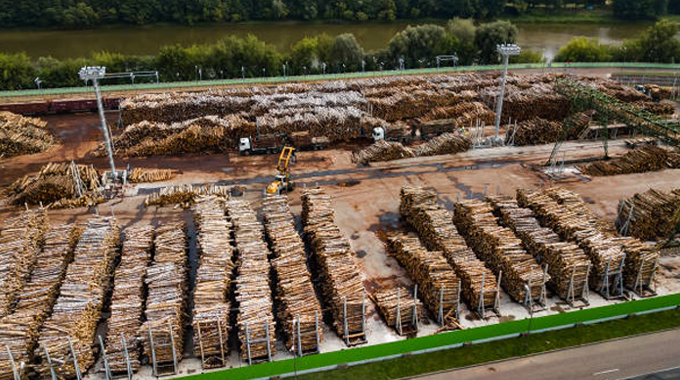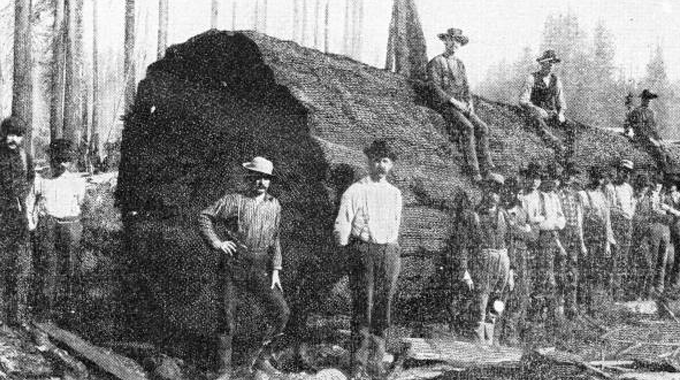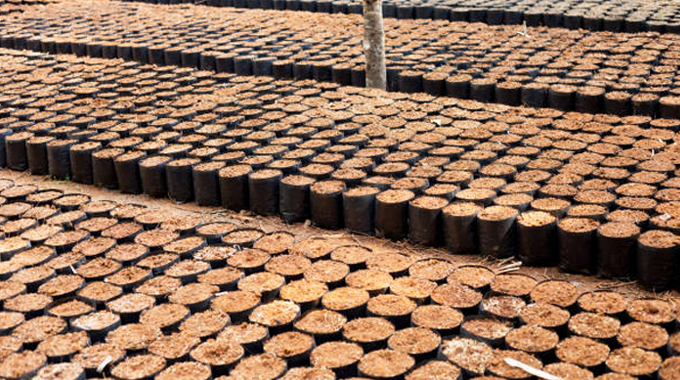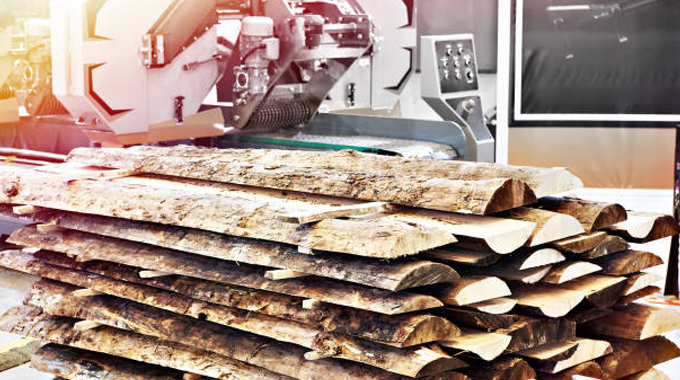Economic Impact of Lumber Production on Global Timber Markets
- August 22, 2024
- 0 comment
The global timber market is a vital component of the world’s economy, providing essential raw materials for construction, furniture, and paper production. Timber markets span continents, linking forests in the Americas, Europe, Asia, and Africa to industries and consumers worldwide. Lumber production, the process of converting logs into usable wood products, is at the heart of this market. Its importance cannot be overstated, as it influences economic activities from local communities to international trade.

Table of Content
- Evolution of Lumber Production
- Major Stakeholders in the Global Timber Industry
- Economic Contributions of Lumber Production
- Environmental and Social Considerations
- Challenges Facing Lumber Production and Timber Markets
- Future Trends in Lumber Production and Timber Markets
- FAQs
Evolution of Lumber Production

Lumber production has evolved significantly over the centuries. Early methods were labor-intensive, relying on hand tools and animal power. The Industrial Revolution marked a turning point with the introduction of mechanized sawmills, vastly increasing production capacity. Technological advancements continued into the 20th century, with innovations such as chainsaws, hydraulic machinery, and computerized milling techniques, leading to more efficient and precise lumber processing.
Global Timber Market Growth
The expansion of global timber markets is closely tied to the growth of lumber production. As demand for wood products increased, so did the scale of timber harvesting and processing. This growth has been fueled by rising construction activities, population growth, and industrialization, particularly in emerging economies. Today, global timber markets are a complex network of producers, processors, and consumers, interconnected through trade and driven by both economic and environmental factors.
Major Stakeholders in the Global Timber Industry

Major Lumber-Producing Countries
Certain countries dominate global lumber production due to their vast forest resources and advanced processing capabilities. The United States, Canada, Russia, Brazil, and China are among the top producers, each contributing significantly to the global supply. These nations not only meet domestic demand but also export large quantities of lumber, influencing global market dynamics.
Market Dynamics
The balance of demand and supply plays a crucial role in shaping global timber markets. Economic factors such as housing starts, infrastructure development, and consumer preferences drive demand for lumber. On the supply side, factors like forest management practices, logging regulations, and technological innovations in milling determine the availability and cost of lumber. Market dynamics are further influenced by international trade policies, currency fluctuations, and geopolitical events.
Economic Contributions of Lumber Production

Revenue Generation
Lumber production is a major source of revenue for many countries. In nations like Canada and the United States, the forestry sector contributes billions of dollars annually to the economy. This revenue is generated through the sale of lumber domestically and internationally, supporting industries such as construction, manufacturing, and retail. The economic ripple effect extends to related sectors, including transportation, machinery, and services.
Employment and Livelihoods
The lumber industry provides employment for millions of people worldwide. From logging and milling to transportation and retail, the industry supports a wide range of jobs, particularly in rural and forested regions. In some communities, lumber production is the primary source of income, sustaining livelihoods and contributing to local economies.
Export and Trade Balance
Lumber exports play a vital role in national trade balances, particularly for countries with abundant forest resources. Nations like Canada and Russia export large quantities of lumber to markets in Europe, Asia, and North America. These exports help balance trade deficits, strengthen currency values, and enhance economic stability. For importing countries, access to affordable lumber is essential for maintaining competitive industries and supporting economic growth.
Environmental and Social Considerations

Sustainable Lumber Production
Sustainability is increasingly important in the global timber industry. Adopting sustainable forestry practices, such as selective logging, reforestation, and certification programs like FSC (Forest Stewardship Council), can mitigate environmental impact and ensure long-term viability. While these practices may increase costs, they are crucial for maintaining the health of forests and the ecosystems they support, ultimately benefiting the global economy by ensuring a steady supply of timber.
Social Impact on Communities
Lumber production significantly impacts the communities surrounding forest areas. In many cases, the industry provides essential jobs and infrastructure, but it can also lead to social challenges. Indigenous communities, in particular, may face disruptions to their traditional ways of life due to logging activities. Balancing economic benefits with social responsibility is essential to ensure that lumber production supports community development without compromising cultural heritage or social well-being.
Challenges Facing Lumber Production and Timber Markets

Market Fluctuations
Lumber markets are subject to fluctuations due to various factors, including changes in demand, supply chain disruptions, and economic conditions. Price volatility can have significant economic impacts, affecting everything from construction costs to international trade balances. For producers, market instability can lead to financial uncertainty, necessitating strategies to manage risk and maintain profitability.
Regulatory and Environmental Challenges
Lumber production faces increasing regulatory and environmental challenges. Governments worldwide are implementing stricter regulations to protect forests, reduce carbon emissions, and promote biodiversity. While these measures are essential for environmental sustainability, they can also increase operational costs and limit access to timber resources. Navigating these regulatory landscapes is a key challenge for the industry, requiring innovative approaches and adaptive strategies.
Future Trends in Lumber Production and Timber Markets
Technological Innovations
The future of lumber production will be shaped by technological innovations. Advances in automation, robotics, and digital technology are poised to increase efficiency, reduce waste, and improve product quality. Technologies such as remote sensing and artificial intelligence can enhance forest management practices, enabling more sustainable and profitable operations. As these innovations become more widespread, they will likely drive significant changes in the global timber markets.
Market Predictions
Looking ahead, the global timber markets are expected to continue growing, driven by demand from emerging economies and increasing interest in sustainable construction materials. However, the industry will also face challenges related to climate change, resource depletion, and shifting consumer preferences. Predicting market trends will require careful analysis of economic, environmental, and technological factors, with an emphasis on balancing growth with sustainability.
Frequently Asked Questions (FAQs)
1. What is the global timber market?
The global timber market is a complex network of producers, processors, and consumers involved in the trade of timber and lumber products. It spans across continents, linking forests to industries such as construction, furniture, and paper production.
2. Why is lumber production important in the global timber market?
Lumber production is essential because it transforms raw timber into usable wood products, driving the supply chain for various industries. It plays a crucial role in economic activities, from local communities to international trade.
3. How has lumber production evolved over time?
Lumber production has evolved from manual, labor-intensive processes to highly mechanized and technologically advanced operations. Innovations such as chainsaws, hydraulic machinery, and computerized milling have increased efficiency and precision.
4. Which countries are the major players in lumber production?
Major lumber-producing countries include the United States, Canada, Russia, Brazil, and China. These nations contribute significantly to global supply and have a strong influence on timber market dynamics.
5. How does lumber production contribute to the economy?
Lumber production generates substantial revenue for national and global economies, creates employment opportunities, supports local communities, and plays a significant role in international trade, particularly through exports.
6. What are the environmental and social considerations associated with lumber production?
Sustainable lumber production practices are crucial for maintaining forest health and ensuring long-term timber availability. Additionally, the industry has social impacts, especially on indigenous and rural communities, which must be carefully managed to balance economic benefits with social responsibility.
7. What challenges does the lumber production industry face?
The industry faces challenges such as market fluctuations, price volatility, regulatory pressures, and environmental concerns. These factors can impact profitability and access to resources, requiring adaptive strategies.
8. What are the future trends in lumber production and timber markets?
The future of lumber production will likely be shaped by technological innovations, including automation and digital tools, which could improve efficiency and sustainability. Market growth is expected, particularly in emerging economies, but will need to balance with environmental and social considerations.
9. How does lumber production affect global trade?
Lumber exports are a key component of national trade balances, especially for countries with abundant forest resources. These exports contribute to economic stability and play a crucial role in global trade flows.
10. Why is sustainability important in lumber production?
Sustainability is vital to ensure that forests remain healthy and productive for future generations. Sustainable practices help mitigate environmental impact, support biodiversity, and ensure a steady supply of timber, which is essential for the long-term viability of the global timber markets.

Gilbert Griffin
Forestry AuthorGilbert Griffin is a forest management expert specializing in sustainable practices, forest health, conservation, and land management. With extensive knowledge in pest control, disease management, and habitat restoration, Gilbert develops strategies to preserve forest ecosystems and biodiversity. Passionate about the natural world, Gilbert adapts to changes in forest management and stays updated through continuous learning. Gilbert also provides seasonal advice to optimize forest care throughout the year.











Leave your comment